Mika Takehara and Ludvig Nilsson(Percussion)
Ms. Mika Takehara and Mr. Ludvig Nilsson are performing together at SKO since 2005 as percussionist. They answered to our remote-interview request from Sweden, talking about how they started playing percussion and what they think about Seiji Ozawa’s conducting.
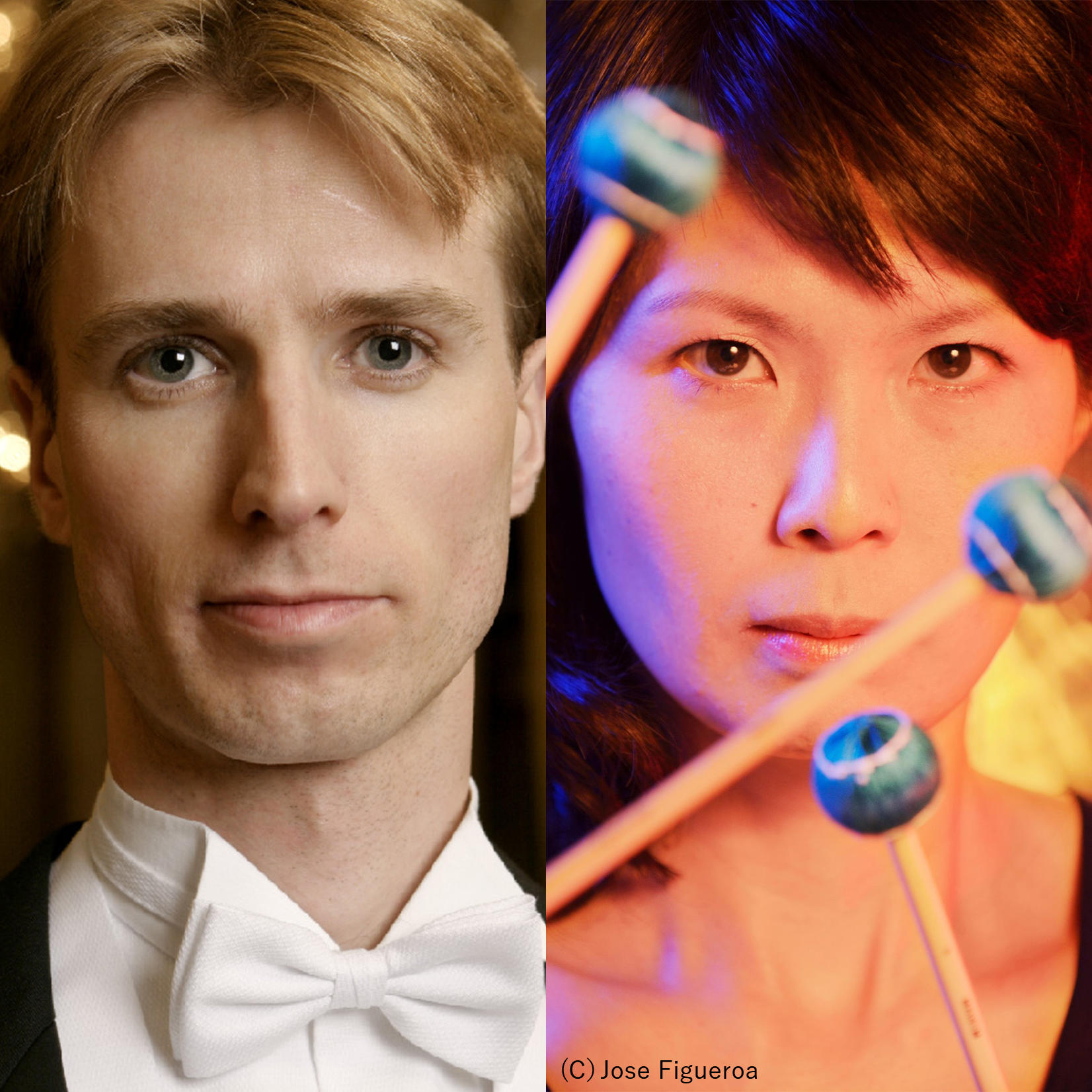
You feel like anything could happen because there's also such competence of all these musicians.
―How did you start to play percussion?
Ludvig: I fell in love with drums. I wanted to play drums and drum set because I really liked the sound of it. I got into a music school when I was 11 years old, and I started to play in the wind orchestra. I noticed that there were other instruments like cymbals, triangles, and melodic instruments such as glockenspiels. I discovered the percussion through the orchestra. I remember that I went to a summer camp with a lot of young players and some people were really good at playing all these percussion instruments. I was so amazed and I started to study all those different instruments.
Mika: I was playing piano since I was 2. When I was 9, my family moved to San Francisco since my father was a researcher at the University of California San Francisco. At lunch time on Wednesdays, a Jamaican music player came to the campus and he played Congas. He played it freely like improvisation, and nearly 200 students danced with it after lunch. I really, really liked the sound of the drums. After that, I wanted to become a drum player, same as Ludvig. After I got into a conservatory and started to play in an orchestra, I discovered all other instruments but drums.
―Takehara-san joined the festival for the first time in 2000. Do you remember when you got the offer? How did you receive it, through phone call, letter, or email?
Mika: I think it was a FAX! I didn't have a fax machine at my place in Sweden, so I received the fax at my school. Somebody came to me and "hey, you got a fax from Japan." I received the paper and "wow!!" I was really, really happy. Really, really happy.
I think the reason I was asked to play at the festival is because my teacher, Mr. Akikuni Takahashi, was one of the students under Mr. Hideo Saito. When Saito Kinen Orchestra was formed for the first time in 1984, the original members were students of Mr. Saito at the Toho. I think somebody became sick and I was asked if I could join the ensemble. It was Tan Dun's chamber music concert. I played percussion with Mr. Laurence Lesser. (*1)
The year we did "Jenufa" opera, which is 2001, was the first year for me to join the SKO. We played "Aida" at the Matsumoto city gymnastic hall as well. There were so many people! (*2) I remember that time because I was still a student in Sweden.
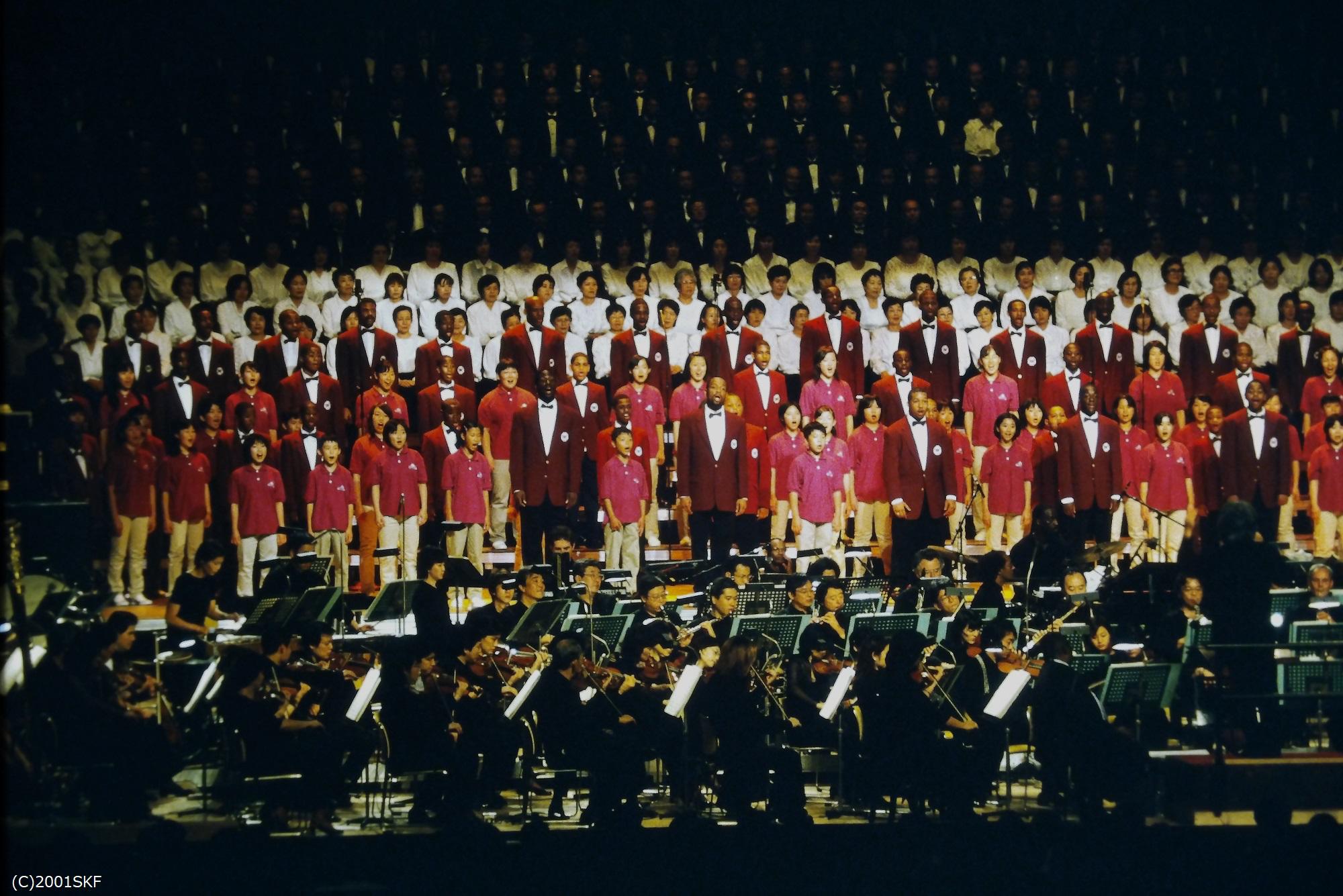
2001SKF Saito Kinen Orchestra in Performance with 1000 Voices. Takehara-san is at the left side of the photo. Behind lines of white shirts ladies chorus, numbers of male chorus are standing.
―How was it to play with SKO for the first time?
Mika: I felt like all of my energy was suck out from my body. Seiji-san is there, famous worldwide players are there, everything is so real and big. My teachers who taught me violin and singing were there too. They are my idols and it was amazing to be surrounded by them. It made me nervous and exciting of course, I felt so much pressure.
―What do you remember the most?
Mika: After one concert, Seiji-san came to me and said, "I don't really know the percussion and instruments, but you were good!" I do remember that. Another thing I remember is that one day, Seiji-san said, "Hey, you play something shape of △... something like △... what was the name?" It's a triangle, you know (laugh). The Maestro Seiji Ozawa, the world-famous, wonderful conductor, was saying it with making a triangle shape of hand gesture. So funny. He has a very warm heart. I enjoy playing with him all the time.
―The next question is for Ludvig-san, the year you joined the SKO for the first time was 2005. How was it?
Ludvig: I was, of course, very excited and honored when I got an offer. Some years before the offer, as Mika has already been in the orchestra, I used to come with her and staying for a week and just listened to rehearsals. I could listen to only rehearsals because the opera season here in Sweden starts earlier than others, I couldn't stay until the premiere. But to listen to the orchestra with great musicians and to listen to everything Seiji says was very exciting. When I got the offer to play there, it was fantastic, and also I've got thrilled. It's such a big challenge for me. Since Mika has been playing there already, it was special that I could also come and play.
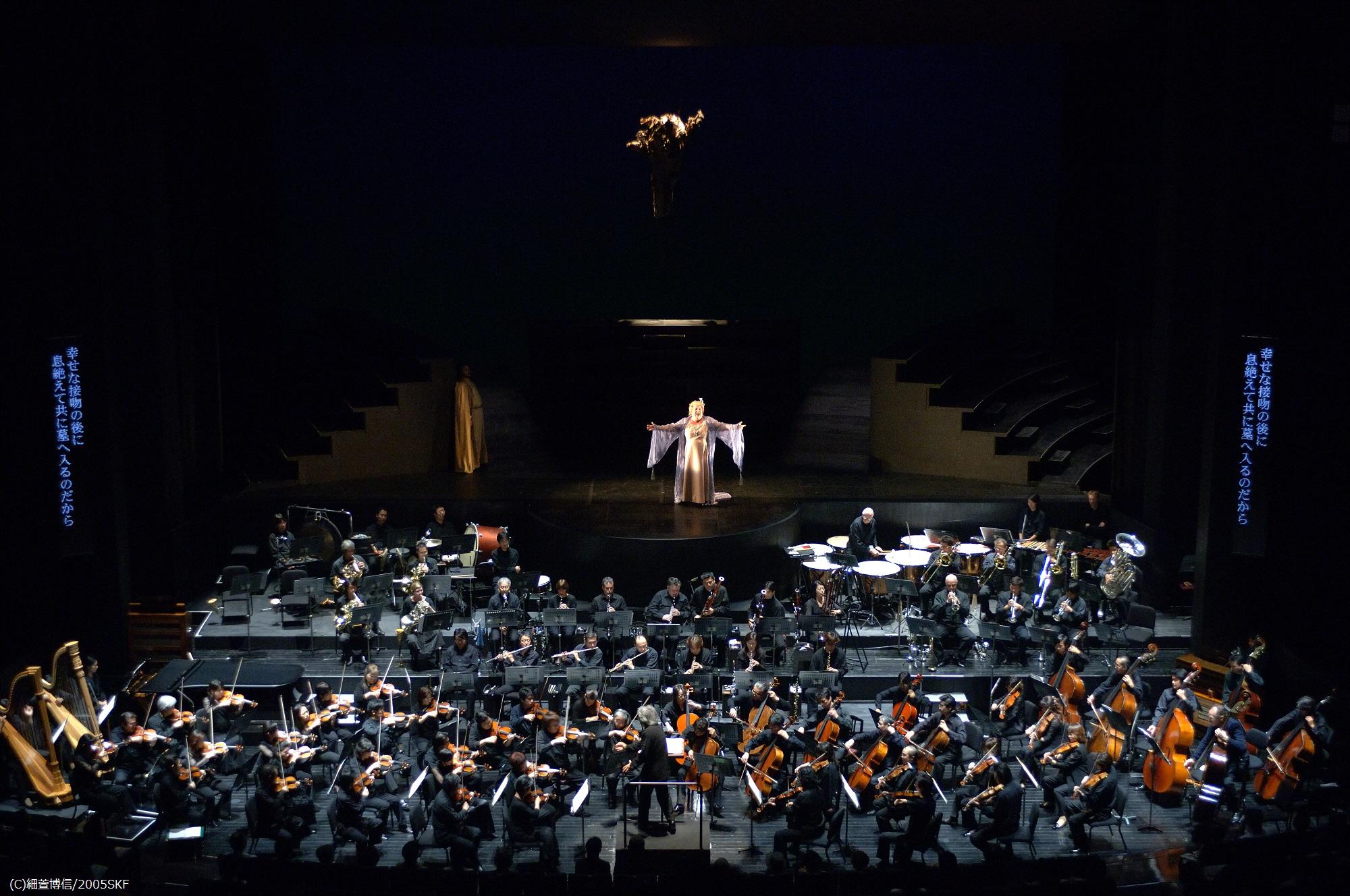
2005SKF Schoenberg: Gurrelieder (semi-staged) The first SKO performance that Takehara-san and Nilsson-san performed together. They are at the right back side of the photo, behind the Tuba.
―How do you describe the character of SKO?
Ludvig: Seiji put together an orchestra with such a lot of famous musicians, who come from very big orchestras. I remember when I read the program and found that almost all first violin players were concertmasters. There is another energy and maybe more soloistic approach to playing. If everyone is playing more soloistic it could go in different ways, but when it comes together it turned into big energy. It's not just trying to melt together. It's thrilling to listen to their energy. You feel like anything could happen because there's also such competence of all these musicians.
Mika: I think so too. Each musician has a long experience to know and meet their own strong side and also the weak side and develop as a musician. Especially in SKO, each of the musicians has very strong character. It could be really difficult to agree when we play together for the first time, but when music starts, we don't feel the difficulty. Or rather, you can feel there is a flow, like a river. We click after a half-day then it's like "woohoo!" There is no problem. How difficult to play together, the timing, small details, very sensitive questions... all those problems are not there. We don't talk about technical issues, but we talk about the feelings and character of the sound. It's a very high level.
―Sometimes the percussion section has several members. How do you communicate with other players?
Mika: We choose the instrument at the beginning who is going to play which instrument. Like "Who is good at playing tambourine for this piece?" We discuss those things before we meet. Festival has instruments but some needs to be rented. For example, one Tam-tam sound for the Boléro, which needs a big Tam-tam with a lot of resonance and clear attack. That kind of stuff we spoke before choosing the instruments.
Ludvig: Percussion section is not like the violin. They play the same part with many people, but we have different instruments and similar to soloistic parts even it's not. No one else is playing your part. It's only you, and this also makes the percussion section together even though we are very individual.
The conductor is alone on the podium, but Seiji is not alone up there.
―Please tell us how was playing under Ozawa-san's baton for the first time?
Mika: The first time I played under his baton was in 1995. I was studying at Toho Gakuen, and 1995 was a special year that Seiji-san was invited to conduct the Toho orchestra. We went to Okushiga (Nagano prefecture) for seven to ten days, and we played Tchaikovsky's Symphony No.4. I was there as a percussionist, and we played at Kissei hall (the festival's home concert hall in Matsumoto) as well. SKO also played the No.4 for the festival in the same year. That year was very special for me because I played with Seiji-san and then after the Toho orchestra concerts, I kept on staying in Matsumoto and helped the backstage. I was preparing chairs and music stands and so on. When all set, I brought my scores and studied them by watching Seiji-san and SKO. When I came to Matsumoto in 2000 to perform at the festival, it was like "Welcome back!" (laugh)
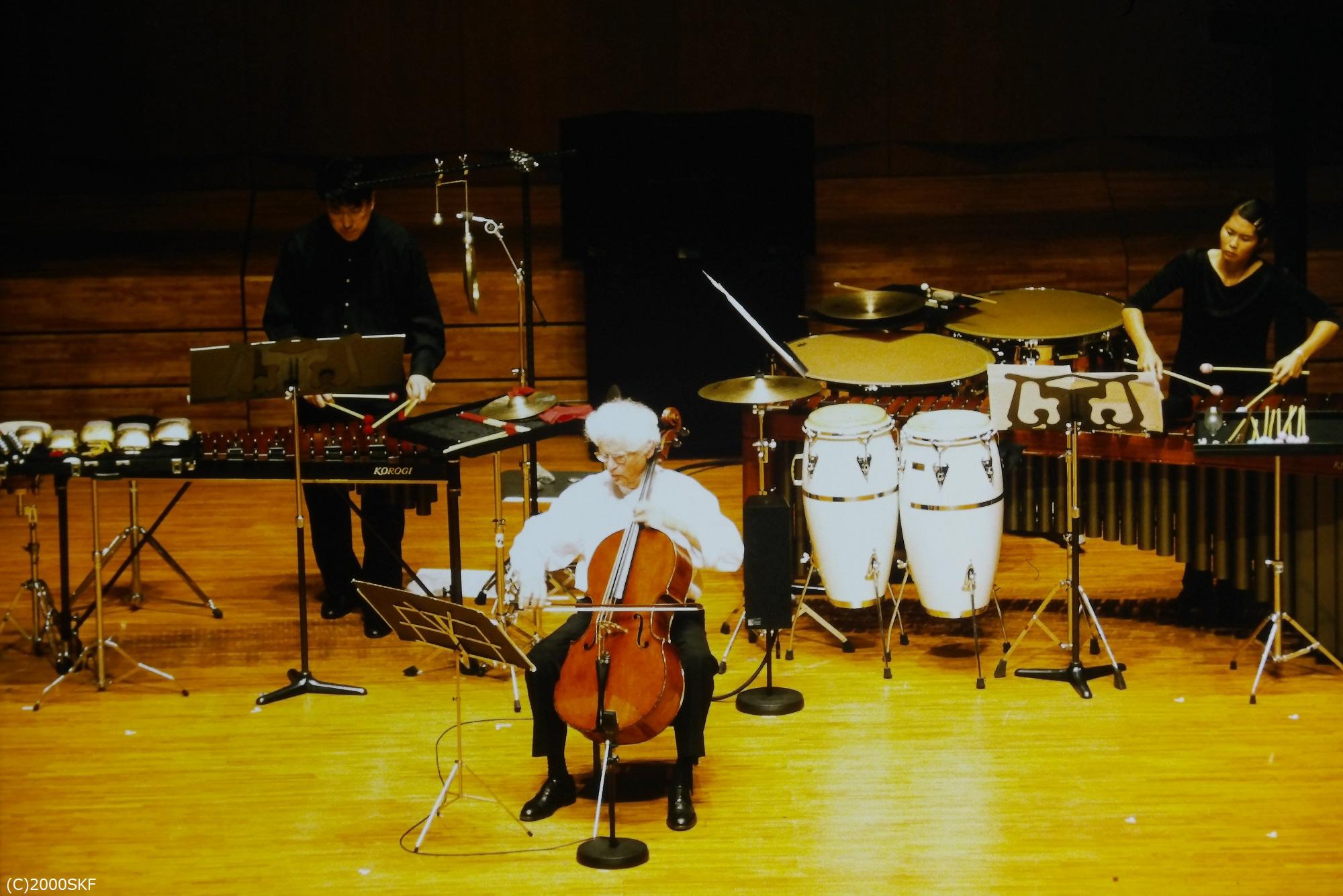
2000SKF TORU TAKEMITSU Memorial Concert V. Takehara-san is at the right side of the photo.
Ludvig: The first time I played with Seiji was actually at the Seiji Ozawa Music Academy. I was one of the semi coaches there for the percussion section. Other coaches were coming too, so it might have been a kind of audition for SKO. In the following year, which is 2005 spring, I was at the Tokyo Opera no Mori and we played "Elektra", which is very complex music and has specific rhythms and melodies. When Seiji started conducting, everything became clear and understandable. All the rhythms and melodies started clicking together as if you put on glasses.
―How do you describe the experience of playing with Ozawa-san?
Mika: It's very pure and very strong.
Ludvig: It's very natural. Natural and pure. Kind of feeling of 100% music.
Mika: I feel like being marinated (laugh). When the performance finished, I feel as if I took a sauna. I feel so light and cleansed. Our soul and emotion are taken out by his huge power, so we also fight back and give something not to be sucked out completely, you know? We need to give back our energy to him as well, and it's so exciting and fun to do. He always sees me when he gives us cue. It's 100% that our eyes meet.
Ludvig: I used to feel, when I play at a different orchestra or with different conductors, we are doing kind of the same thing but on different levels. Seiji is doing the same things as all conductors do, but he is doing it so much more. I think his pureness, the natural love of the music, and the concentration makes it so much more. It maybe is a stupid way to describe but it feels like real. There's no acting, thers is no fake. It's for real.
Mika: When you touch an art, your emotion will move. You feel touched or remember something or maybe feel melancholy. All those emotions in you became 100%. It's like, when I listen to solo parts of clarinet and horn in Beethoven Symphony No.8, tears come naturally. My memories are brought back. Ozawa san brings out the emotions and feelings that he wants to describe in that music out of each musician.
Ludvig: I think Seiji has a way to fix when something doesn't work. Many conductors try to fix the orchestra first when things don't go well. But Seiji always goes to himself first. And he asks himself, "Can I do something?"
Mika: That is very exceptional.
Ludvig: He has high demands on the musicians, of course, but he's having at least or more on himself.
Mika: He is conducting, or I should say he is making music to make our souls together. It's not about tempo or technical level, but more to trust musicians and also to let us express our musicality 100%. He respects us and let us think and feel.
Ludvig: Also he let the musicians lead when somebody has a motor in the music. He gives the lead to that person, and that person leads, and then Seiji takes over, and choose next. The conductor is alone on the podium, but Seiji is not alone up there.
Mika: He is with musicians. He is a musician.
―Which is the most memorable performance or the program for you from the festival?
Mika: So many memories I have at the festival...but if I have to choose, I'd say Tchaikovsky's Serenade for Strings (2010) and Bach's Chaconne (2004). I was fortunate enough to experience those concerts at the Kissei Bunka Hall. This experience became something irreplaceable in my music life. The first movement of Serenade for Strings passes through sound and became a roar. You feel like you are going to heaven in the second movement. The third movement is filled with sorrow and pathos. Then the last movement carries hope for the future in each note... I wish there was a percussion part.
I have so many memories at the festival along with concerts. Members of SKO, Mo. Ozawa, staffs, people in Matsumoto city, the food, the beer, the fruits, the hot springs, a lady staff at Richmond hotel, the family who runs a convenience store, people who took care of my children at the daycare service... I cannot just pick one.
Ludvig: I think the biggest memory was the concert of Mahler's Symphony No. 1 in 2008. Seiji, the power and the wonderful sound of the orchestra. The enthusiastic audience. The Decca team. In the following year, when I was flying back to Matsumoto from Europe, I found this recording on the sound system on the airplane. When I found the CD of ours on the plane, I felt "wow!" It was like an extra "bonus".
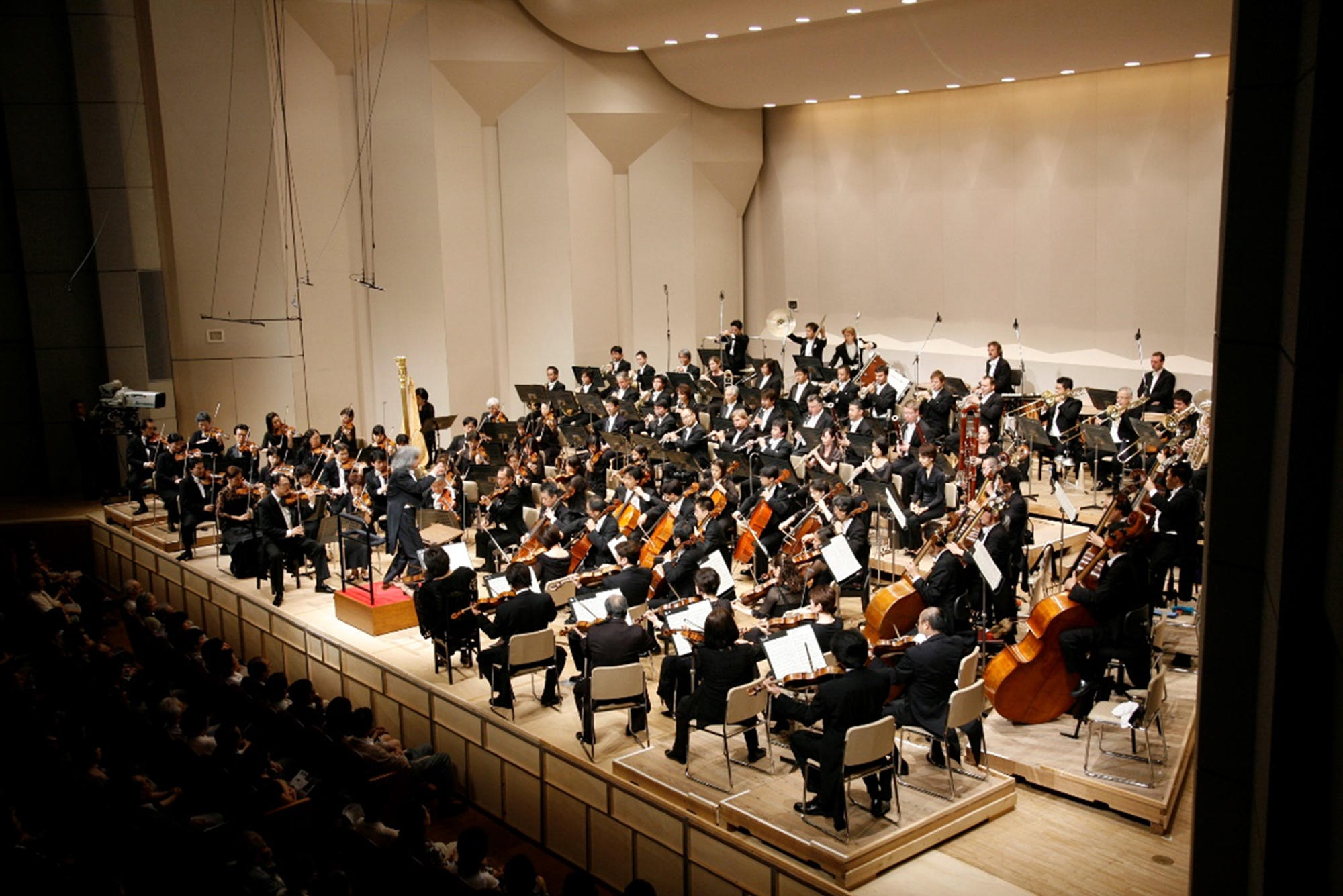
2008SKF Orchestra Concert Mahler: Symphony No.1 in D major, "Titan"
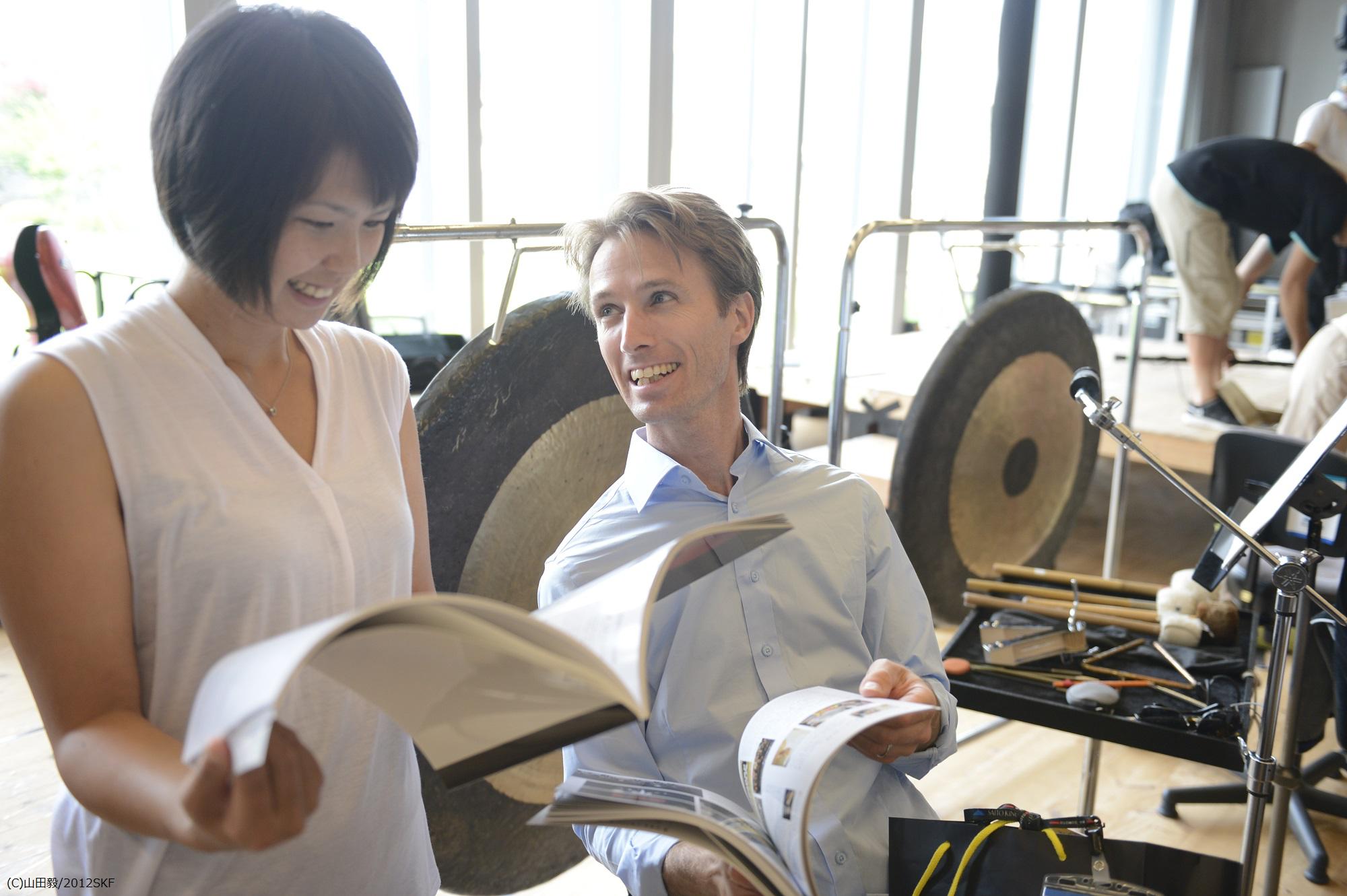
Off shot taken during 2012SKF opera rehearsal.
―Thank you.
*1: TORU TAKEMITSU Memorial Concert V. Along with several Takemitsu pieces, Tan Dun: Elegy Snow in June (Violoncello: Laurence Lesser, Percussion: Akikuni Takahashi, Yoshiyuki Tsukada, Kiyomi Kikuchi, Mika Takehara) was performed.
*2: Saito Kinen Orchestra in Performance with 1000 Voices. 1000 people from all over Japan performed G.Verdi: Hymn of the Nations at Matsumoto City Gymnasium with The Boys Choir of Harlem and SKF Matsumoto Junior Chorus.
Interview on August 2020
Listener: Ayumi Seki (OMF PR staff)